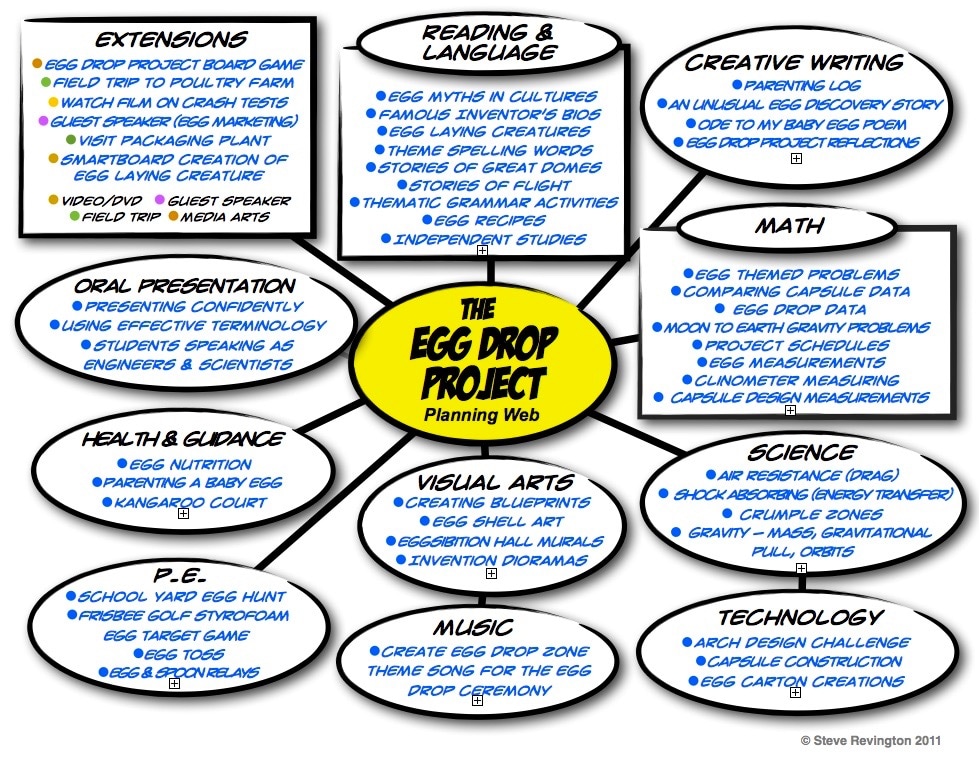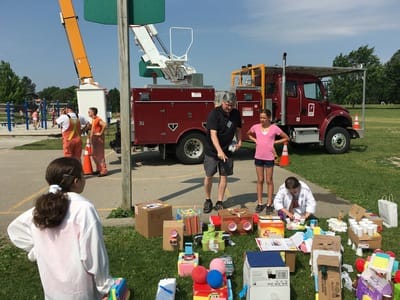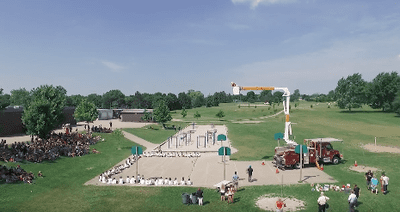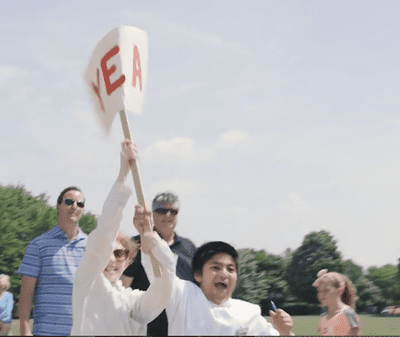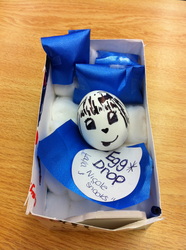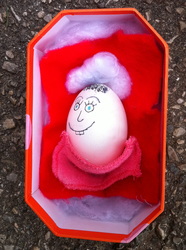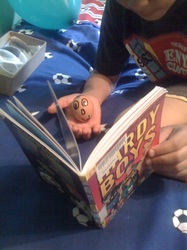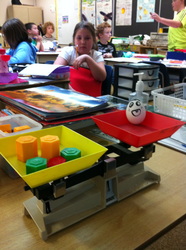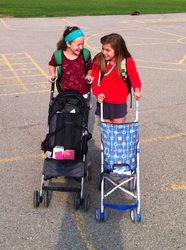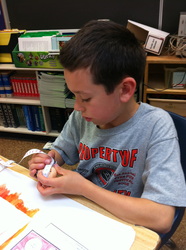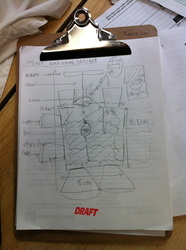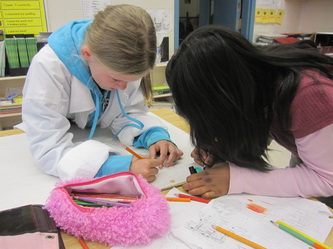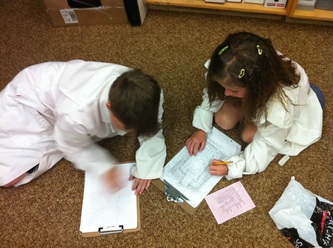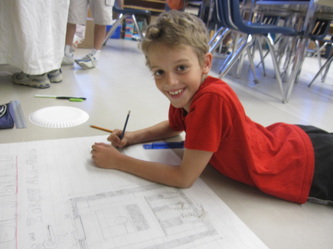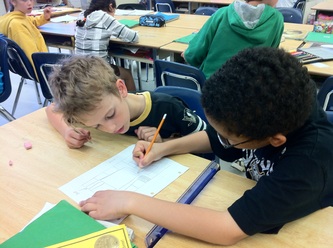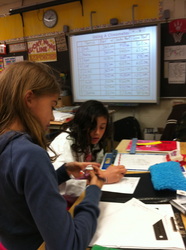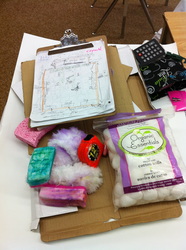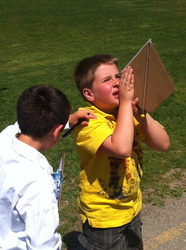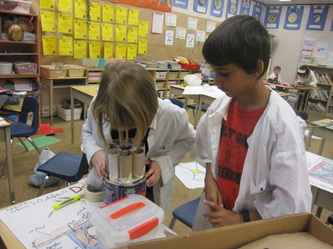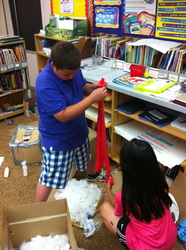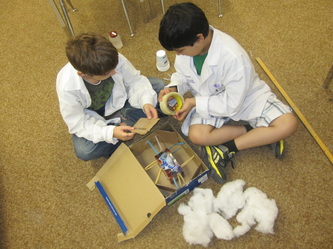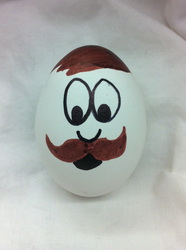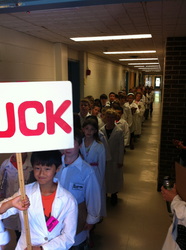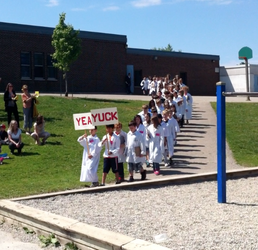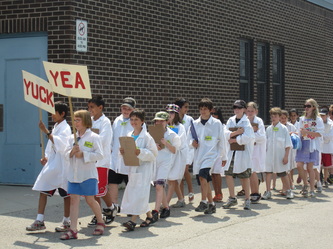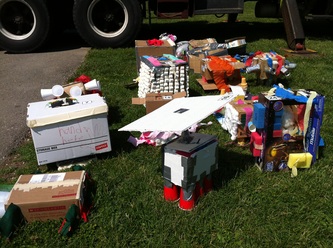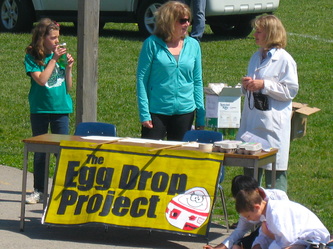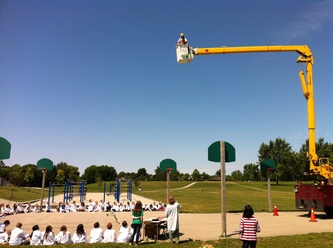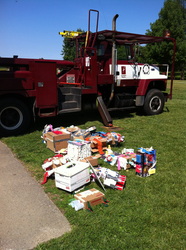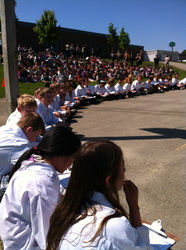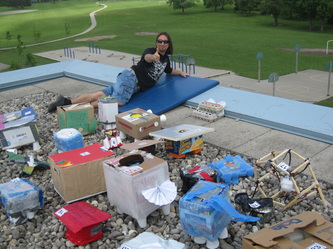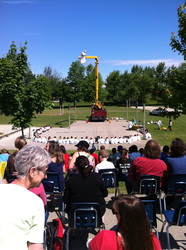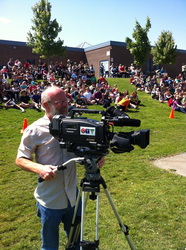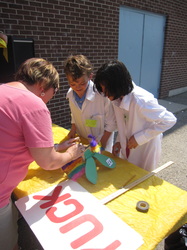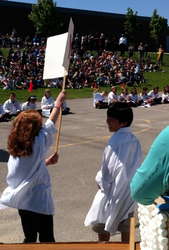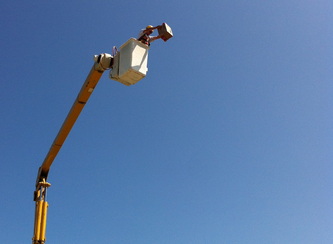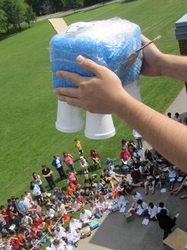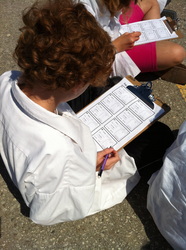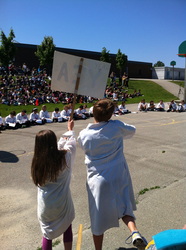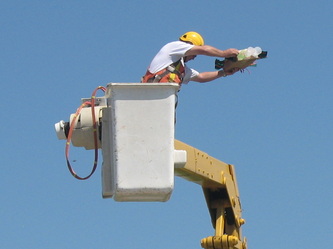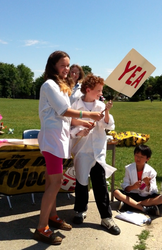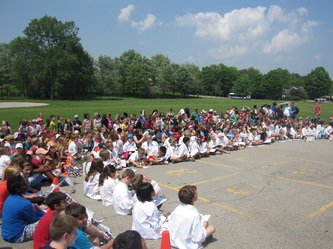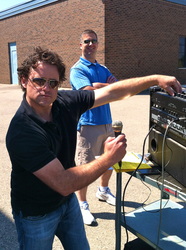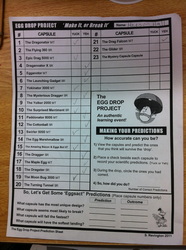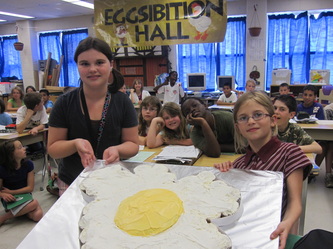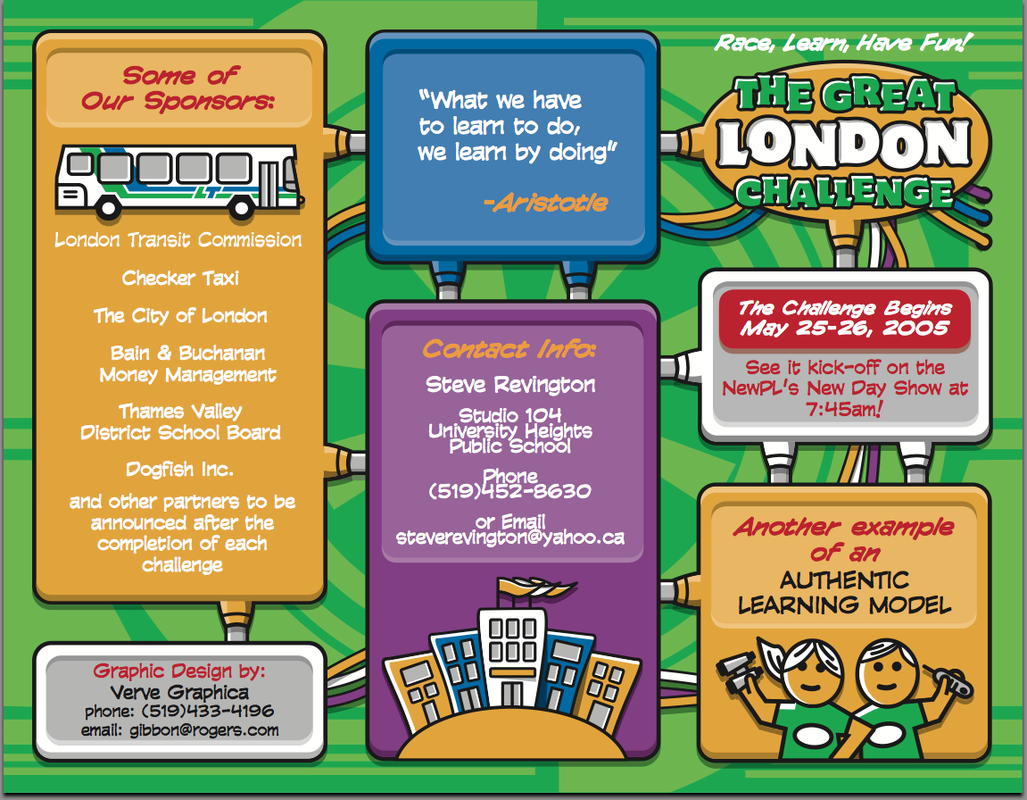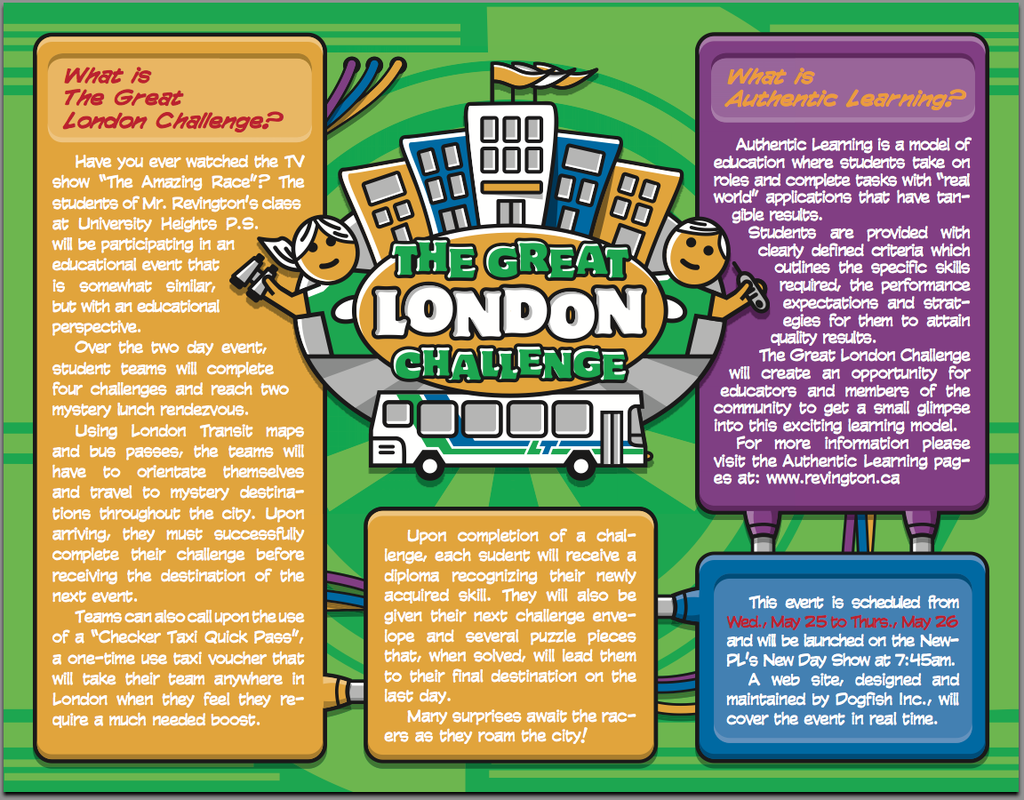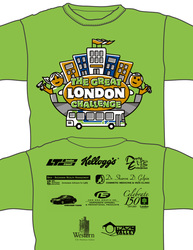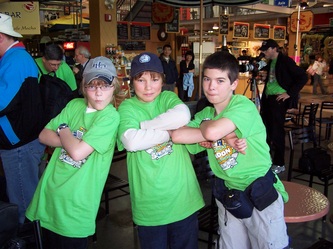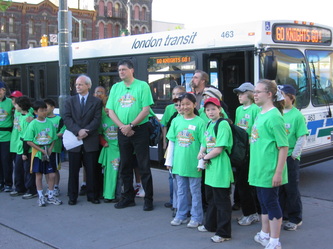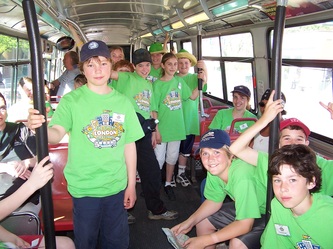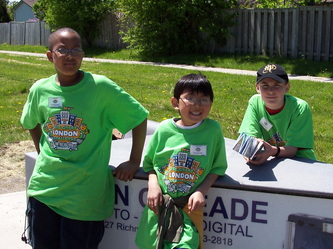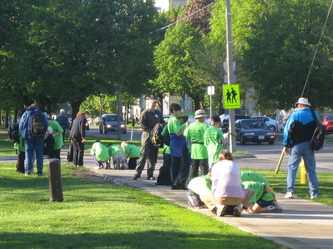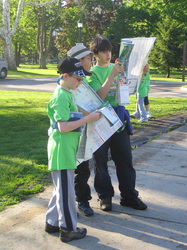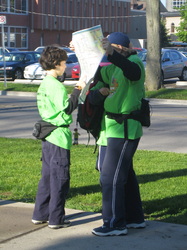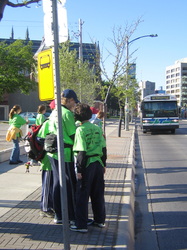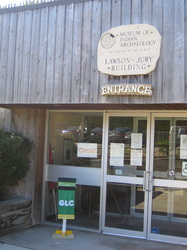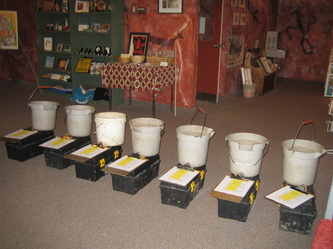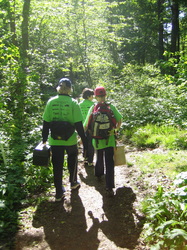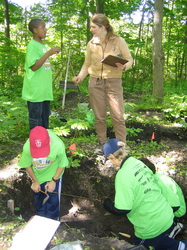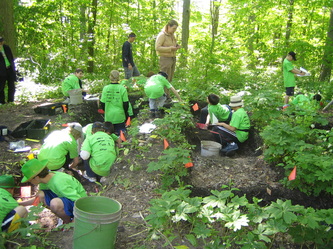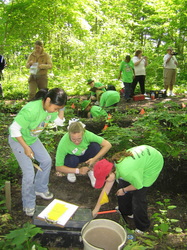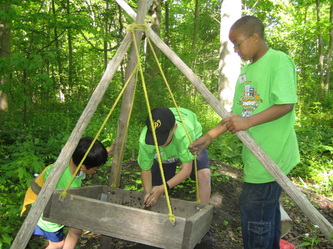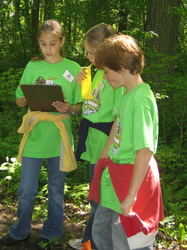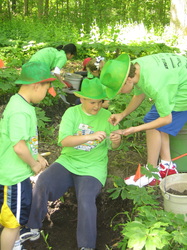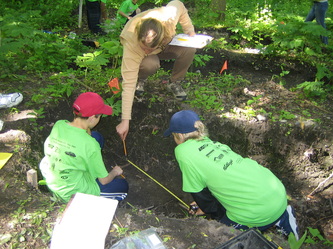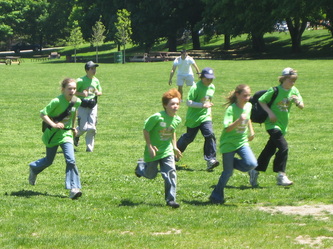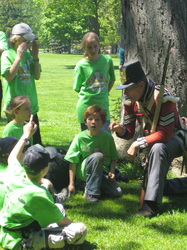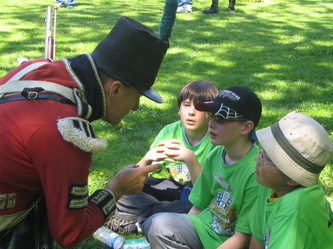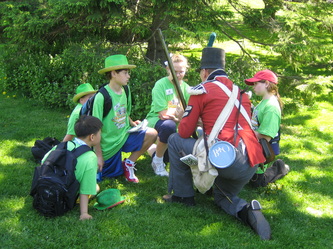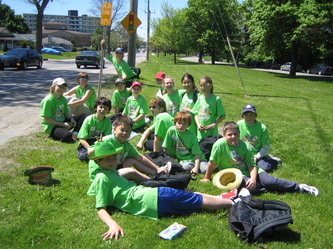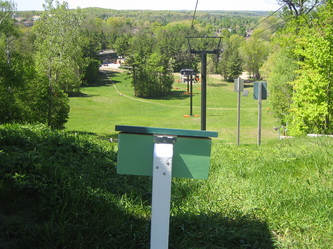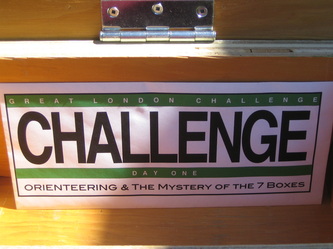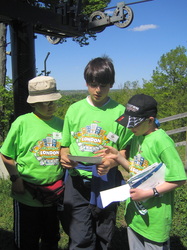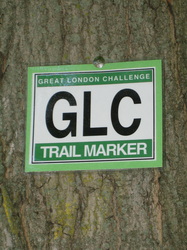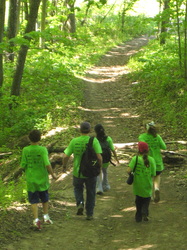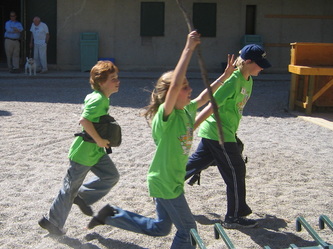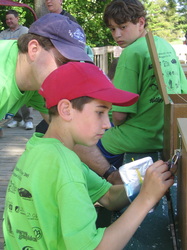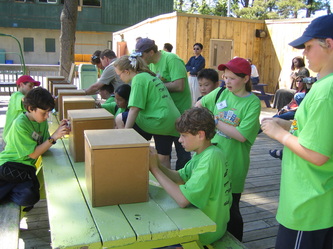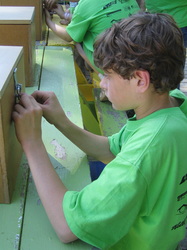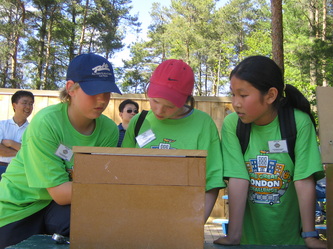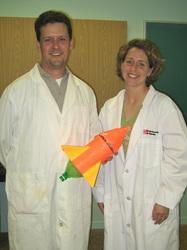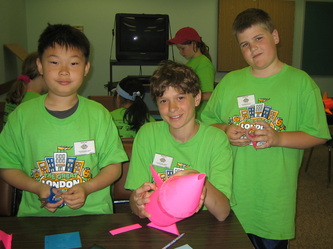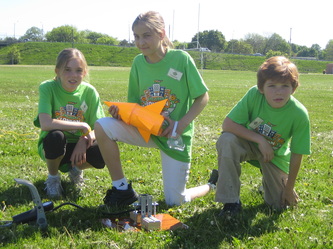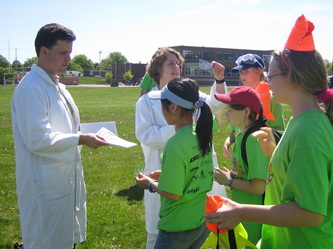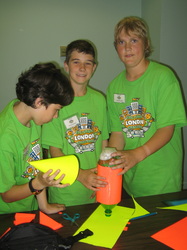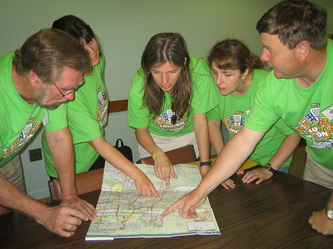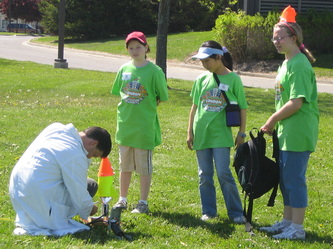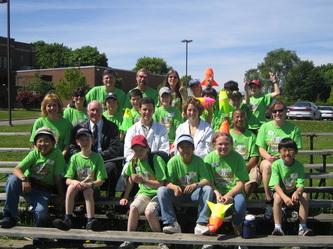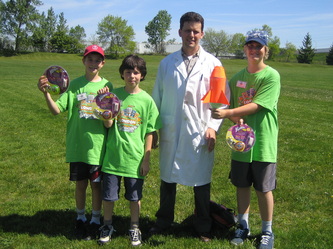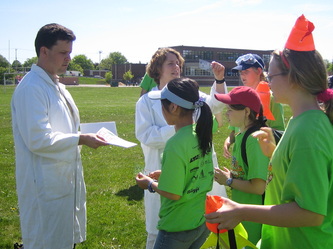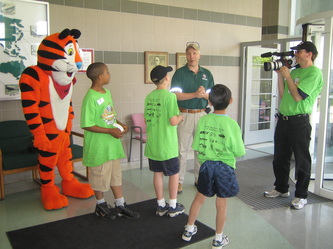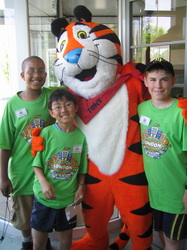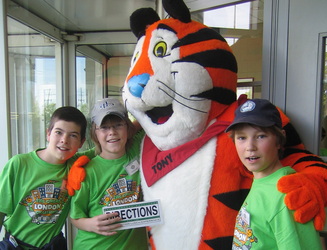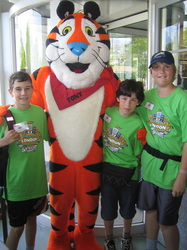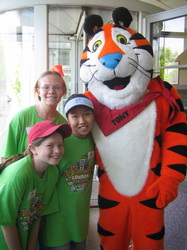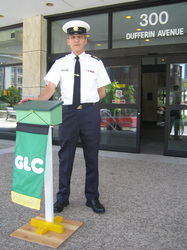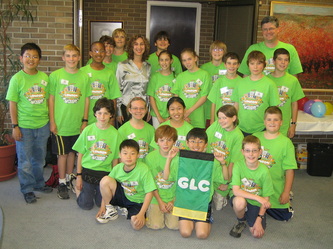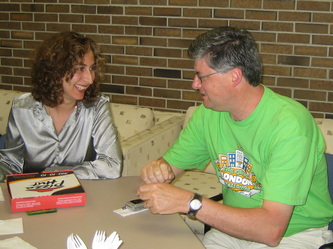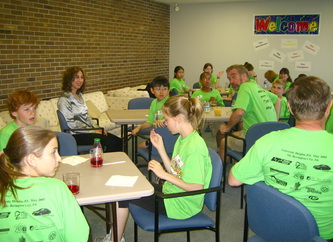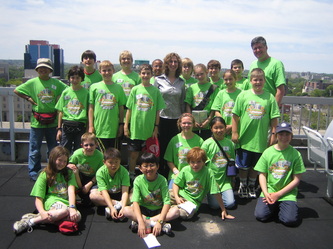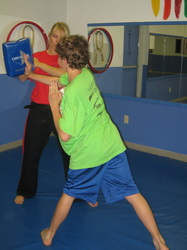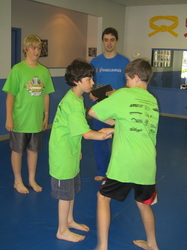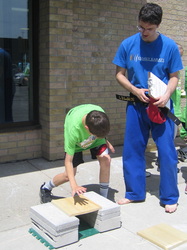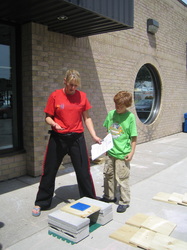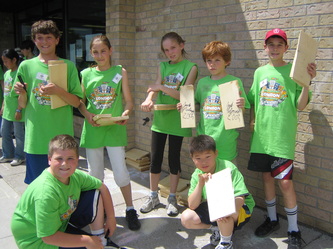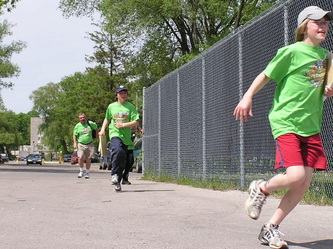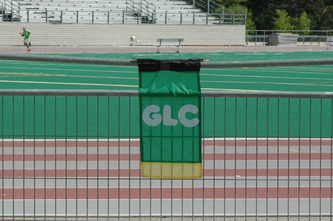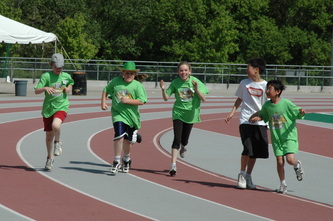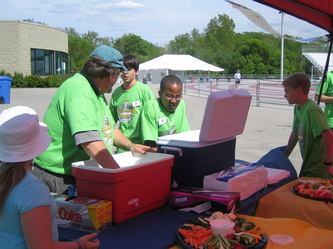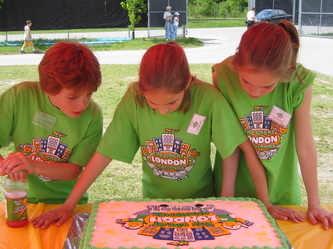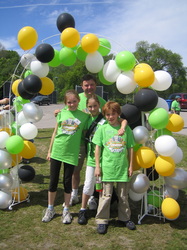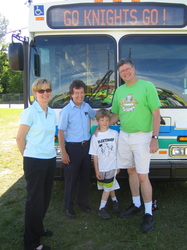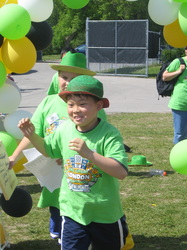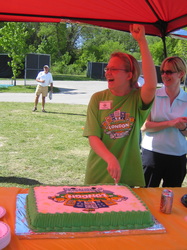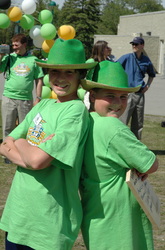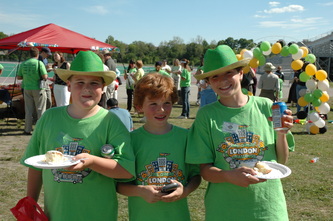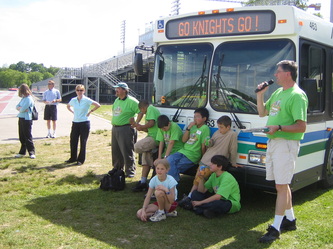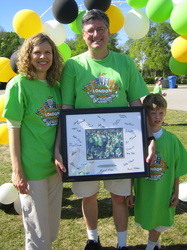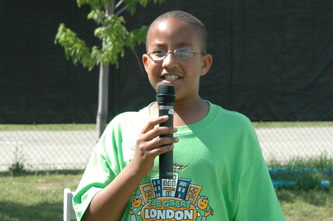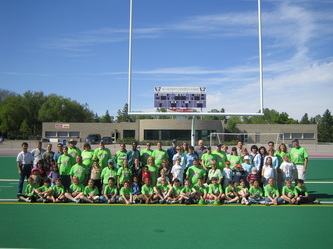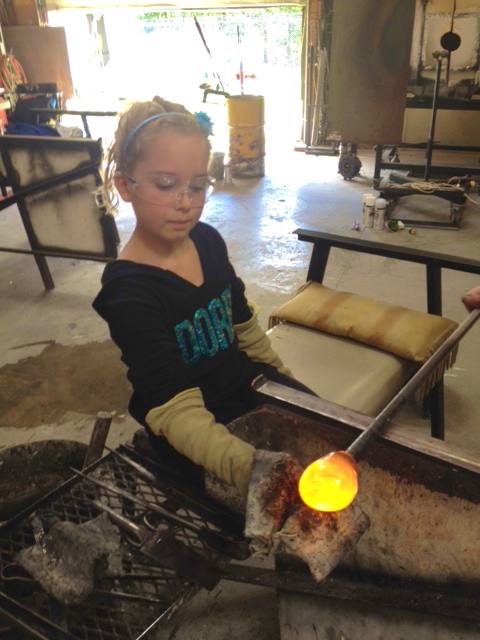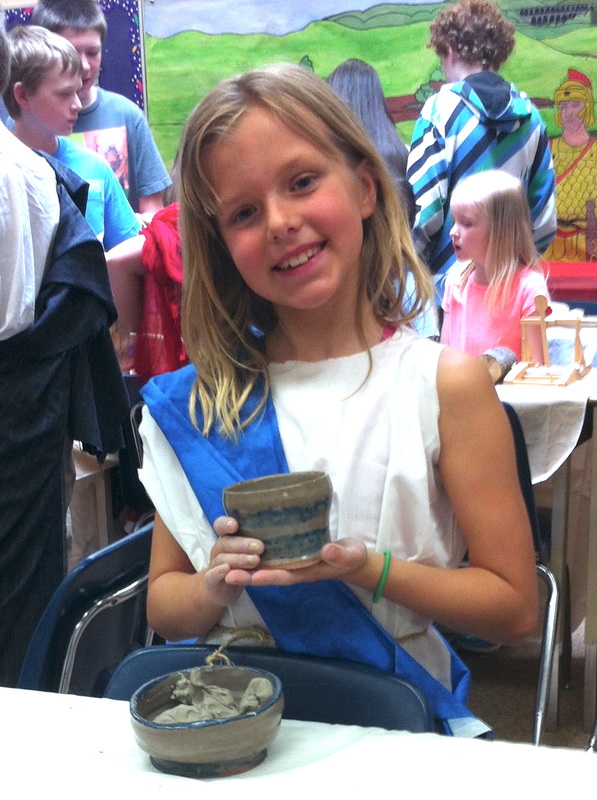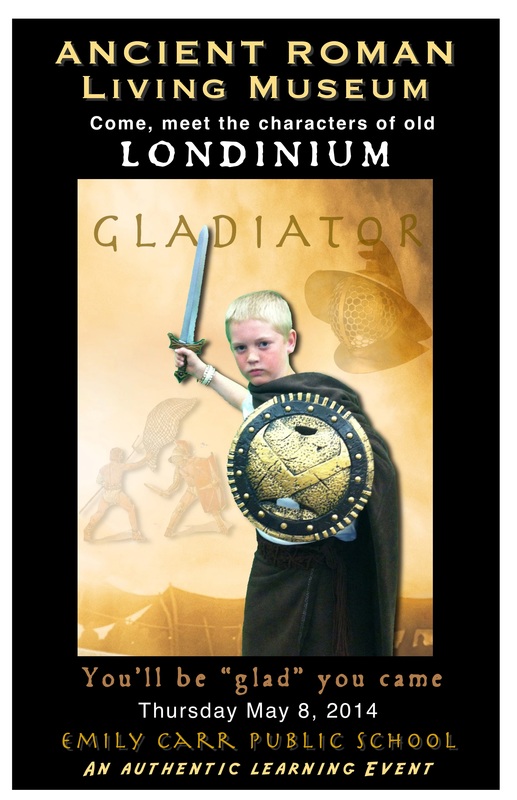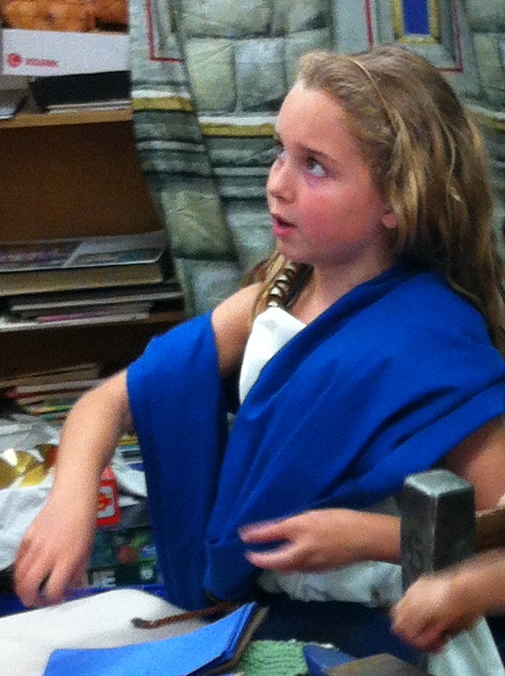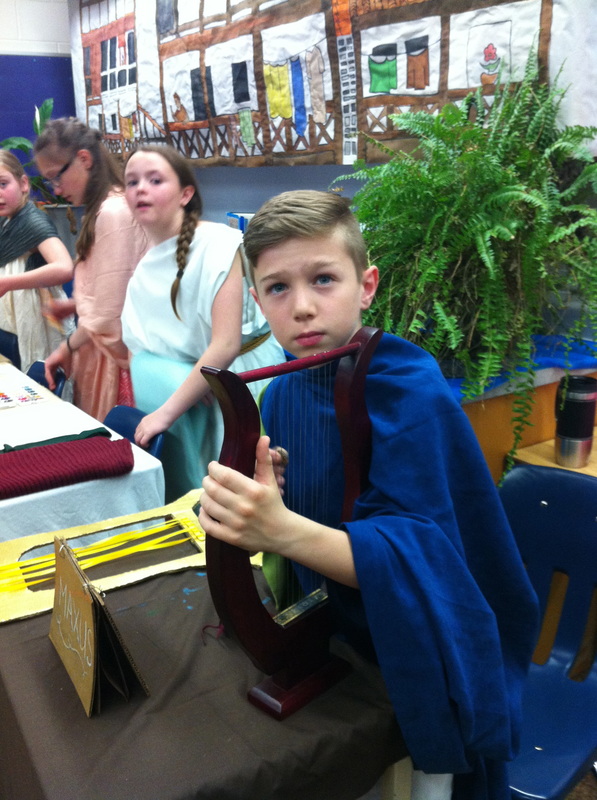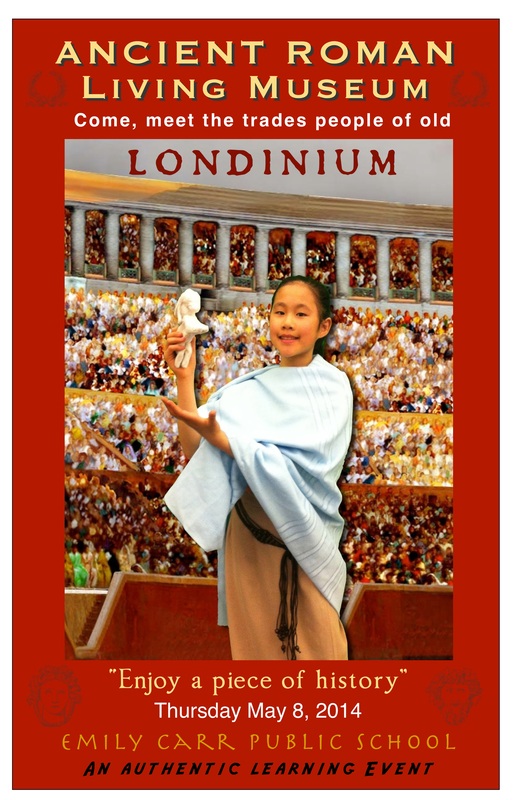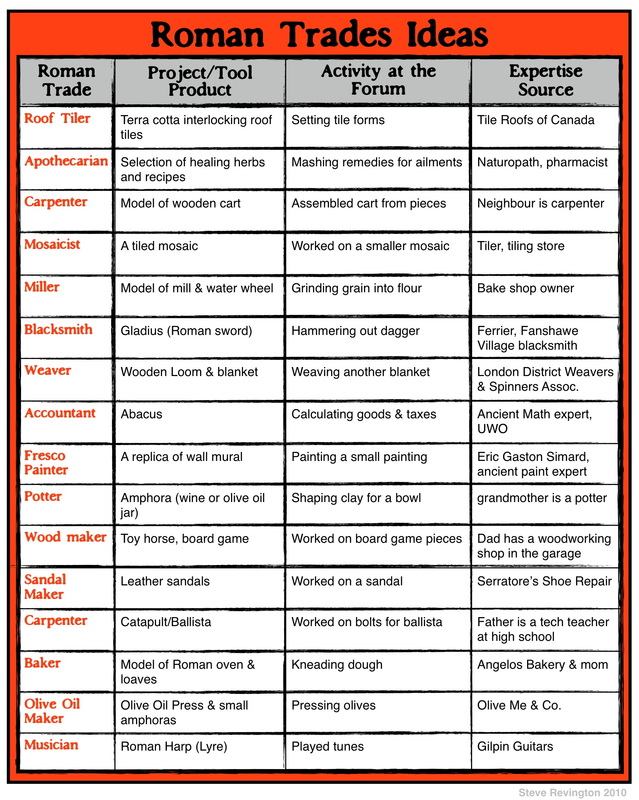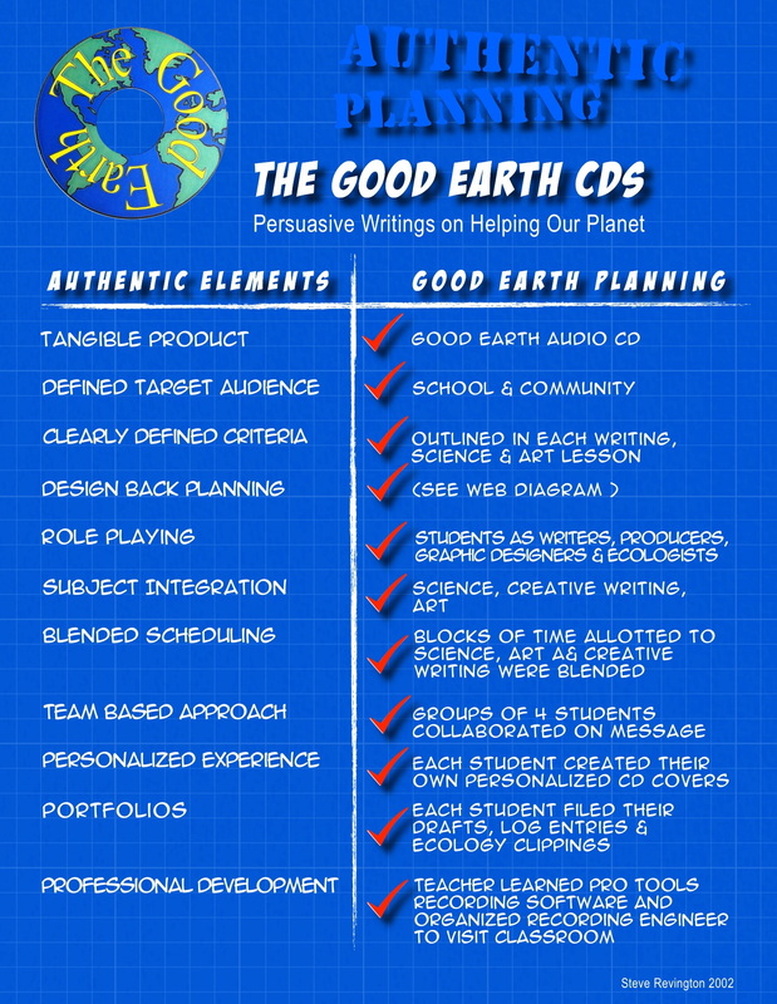The Egg Drop Project - an Authentic Learning Initiataive
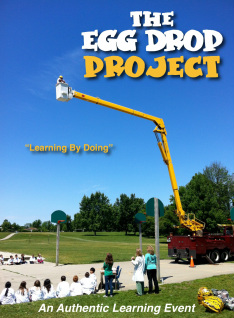
The Egg Drop Project is an authentic learning event that I began to implement in 1985 at Exeter Public School after viewing a TVO program featuring an egg drop activity. After observing the enthusiasm my students and parents had for the project, I realized the great potential it possessed in allowing for subject integration and to nurture many meaningful connections with real world experiences.
Year after year the project evolved, as new elements were added and others refined. Since then I have introduced this project to grades two through grade eight keeping age appropriateness and curriculum expectations in mind. The results were always the same: heightened motivation, all academic levels wholly engaged, greatly reduced incidents of inappropriate behaviour, greater individual focus and improved student attendance.
The Objective: The objective is to create a capsule, with a hatch and a latch, to protect a raw egg when dropped from a four story platform onto the hard pavement.
Goal Criteria: The capsule cannot have a parachute and must have a hatch and a latch. It also must be no larger than 40 cm. X 40 cm. This encourages a whole other level of thinking skills and design challenges. Students are to design and construct their egg capsules entirely in the classroom. No part of the project can be completed at home although testing, research and prototypes are encouraged outside of school. Supplies and tools may be brought into school as long as students have had proper instruction and a note from their parents confirming permission of using tools.
Although this project could be completed as a "one-off" in half day (one-off) I implement it over a four to five week period, each week providing a deepening understanding. Here's a sample of topics I usually cover leading up to "Egg Drop Day". A list of activity work sheets can be found at "The Egg Drop Project" working page.
The anchor subject(s) of The Egg Drop Project are science and technology although many other subjects were an integral part of the unit of study.
Year after year the project evolved, as new elements were added and others refined. Since then I have introduced this project to grades two through grade eight keeping age appropriateness and curriculum expectations in mind. The results were always the same: heightened motivation, all academic levels wholly engaged, greatly reduced incidents of inappropriate behaviour, greater individual focus and improved student attendance.
The Objective: The objective is to create a capsule, with a hatch and a latch, to protect a raw egg when dropped from a four story platform onto the hard pavement.
Goal Criteria: The capsule cannot have a parachute and must have a hatch and a latch. It also must be no larger than 40 cm. X 40 cm. This encourages a whole other level of thinking skills and design challenges. Students are to design and construct their egg capsules entirely in the classroom. No part of the project can be completed at home although testing, research and prototypes are encouraged outside of school. Supplies and tools may be brought into school as long as students have had proper instruction and a note from their parents confirming permission of using tools.
Although this project could be completed as a "one-off" in half day (one-off) I implement it over a four to five week period, each week providing a deepening understanding. Here's a sample of topics I usually cover leading up to "Egg Drop Day". A list of activity work sheets can be found at "The Egg Drop Project" working page.
The anchor subject(s) of The Egg Drop Project are science and technology although many other subjects were an integral part of the unit of study.
Week 1 - Parenting An Egg: The Mars Connection - It all began in Pasadena, California at The Jet Propulsion Laboratory in the late 1950s, Parts of An Egg, Nutrition of An Egg, Adopting An Egg, Acting Responsibly, Egg Laying Creatures, Egg Court (for suspicious parenting behaviour and egg fatalities), Parenting Logs, Adoption Papers, Weights & Measures, Egg Baby Measuring Data
Week 2 - Designing An Egg Capsule: Simple Experiments (gravity & drag), Galileo's Inventions, Real World Blueprints, Capsule Blueprints, Understanding the Basics of Air Resistance, Gravity, Moon Gravity, Tides, Gravity Math, Cross Sections, Impact, Recoil, Interviewing & Selecting Partners
Week 3 - Constructing The Capsule: Tool Safety, Partner Conferencing, Construction Based on the Blueprint, Clinometer - Height Estimation and Measurement & Data, Canadian Inventors, Capsule Testing, Recording Drop Data, Capsule & Blueprint Presentations, Egg Carton Creations
Week 4 - The Eggsibition & Egg Drop Day: Publish Portfolio (student paper artifacts), My Amazing Egg Story Writing, The Egg Drop Day Rehearsal, Egg Adoption Display Table, Wall of Great Egg Parents & their Babies, Open House, Parade of The Scientists, The Drop Ceremony, Recording "Drop" Data, Meeting The Press (older students or real), Data Interpretation and Findings, Capsules & Packaging - Real Life Applications, The Celebration, Self Reflection, Step Back and Reflect.
Finally, the most recent developments in the Mars Rover explorations are shared.
Level 3 is an authentic event that requires major planning, a large community audience, sophisticated subject integration, numerous simulations and tasks to support student success.
Finally, the most recent developments in the Mars Rover explorations are shared.
Level 3 is an authentic event that requires major planning, a large community audience, sophisticated subject integration, numerous simulations and tasks to support student success.
Check out the latest Egg Drop Project Media !
"Egg Drop a Smash at Emily Carr" (The Londoner, June 13, 2013)
"Egg-citing Student Science Project" (CTV London, Ontario, June 2013)
"Splattering Drop Video" (CTV London, Ontario, June 2012)
"Egg Drop a Smash at Emily Carr" (The Londoner, June 13, 2013)
"Egg-citing Student Science Project" (CTV London, Ontario, June 2013)
"Splattering Drop Video" (CTV London, Ontario, June 2012)
Great London Challenge (GLC) - Authentic Learning Meets Amazing Race
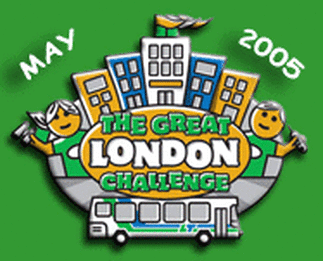
Authentic learning meets The Amazing Race
The Great London Challenge was created to provide my gifted students at University Heights P.S. with a variety of authentic learning events over two days. It had to be created in secrecy as to not tip off any of the students. It was the most demanding authentic event I have undertaken. The event was truly a community effort as many businesses, board employees and organizations provided services or training to support its success. Parents were an incredible asset as they helped coordinate, construct, network, sew, contact media and provided their expertise in numerous ways. Each group of student team was supervised by a parent but parents could only provide health and safety assistance if needed. Students were given clues and upon solving them found themselves at locations across the city of London, Ontario (pop. 350,000) completing high quality learning tasks. Upon achieving each authentic task they received their next destination's clue and also received acetate clues that when all were present and decoded would direct them to a final mystery destination, University of Western Ontario's TD Waterhouse stadium.
Dogfish Enterprises: Real Time Online Coverage
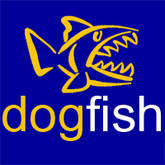
Dogfish Enterprises in London, Ontario provided real-time "race" details throughout the event. Don and Nan Britton of Dogfish created a fabulous, kid friendly web site just for the Great London Challenge and maintained it for real time viewing. It was amazing. It included profiles on the teams, descriptions of the events, hour to hour coverage, maps of where the teams were traveling and revealed the mystery locations as the last teams left their destinations. A very unique element was the team tracking meters that provided viewers with a graphic scale of how the teams were doing. The parent supervisors called into Dogfish on the hour to report their teams navigation level, energy level, cooperation level and authentic task accuracy level and Dogfish posted their results. Parents who could not attend the two day event could watch online to see where their child was located and how they were progressing throughout the two day challenge. I'll never forget the look on Don Britton's face when he divulged to me at breakfast on the second day that the site had received 46,000 hits in its' first few hours and the band width needed to be widened. The TV launch provided viewers with the race web address and the interest was overwhelming. Before the site was closed, a few months later, it had received over 167,000 hits and viewers from all over the world.
London Transit Commission

London Transit Commission, London, ON
Our closest partner was the London Transit Commission who provided free bus rides anywhere within the city as long as the students wore a project badge and their bright, green T-shirts. Also, Checker Limousine provided each team with a pass to be used at any time during the two day event. Prior to the challenge students received instructions on reading co-ordinances, orienteering and bus safety. Each team had three or four students and one parent supervisor. The supervisor's duty was to aid with safety issues and to help track the team's progress. They could not give advice or make suggestions however. Students were presented their first clue envelopes by the CEO of London Transit Commission, Larry Ducharme on the "Morning Show" at TheNewPL television station. Students were driven by bus to a nearby city park, Victoria Park, to start their two day journey.
The Authentic Learning Task #1 - Museum of Indian Archaeology
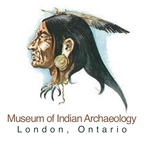
Their first destination was The Museum of Indian Archaeology. Here they were given instructions on excavating a genuine 16th century woodland Indian site. Students were given excavating kits and proceeded to a genuine excavation site. They worked within the digging grid, carefully exploring for pot sherds. They sifted, cleaned, identified and recorded their newly discovered artifacts and received their next destination clue from an archaeology supervisor upon demonstrating a professional level of skill.
Interest Stop #1 - Springbank Park - Glenn Stott War of 1812 Expert
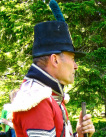
After lunch, students proceeded to Springbank Park near "Commissioners Road". Here, during the War of 1812 there was a skirmish between British/Canadian soldiers and the American invaders. A very knowledgeable war reenactor, Mr. Glenn Stott, dressed in a period soldier's uniform and waited for the students to arrive. He retold the story of the (skirmish) Battle of Hungerford Hill, today Reservoir Hill, and how an American renegade was hiding up in the Byron Hills. The students loved to hear his real life history lesson, one that most hadn't even heard before. Once completed Glenn handed out the next clue card that instructed them to head for the hills, of Byron.
Authentic Learning Task #2 - Boler Mountain Orienteering
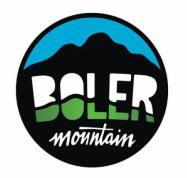
The students were given clues to head to Boler Mountain Ski Club in Byron where they would find their instructions atop the steepest hill. They had to navigate their way on a marked trail covering a 150 acre property, where they were to find three locations marked with their team names. Within 20 meters of these markers they would find a number on a log, branch or stone. Once they had collected all three numbers they would have the combinations to unlock a locked strong box back on the ski chalet's outdoor porch. Only one catch, there were eight strong boxes! Once they had opened the boxes they discovered cold drinks and healthy snacks as well as the next day's starting point. The parents waited for their children here and gave them a well earned night off.
Starting Point, Day 2 - Kelloggs Sponsored Breakfast

Parents, teachers and students had an early breakfast at our class room at University Heights. Kelloggs sponsored a lovely breakfast where the students shared their previous day's adventures and their enthusiasm for meeting today's mystery locations. Mr. Roberts, a Kelloggs representative, handed out the next clue envelopes.
Authentic Learning Task #3 - Water Bottle Rockets, Jeff Majors (TVDSB Science Consultant)

Students decoded their way to the Thames Valley District School Board head offices where they found their way to a water bottle rocket laboratory. A black, leather jacketed, security guard complete with dark sun glasses and a serious demeanor checked clearance badges setting the tone for this task. With direction from Mr. Majors, Thames Valley's science consultant, the students were required to design, build and launch a water bottle rocket that could sustain an air time of at least 5.8 seconds. That's no easy feat. They could test it and refine it but the next challenge envelope wasn't coming their way until they had achieved that air time expectation.
Interest Stop #2 - Kelloggs - Photos with Tony the Tiger

To break up the long stretches of road between tasks, interest stops provided a rest from the intense goal driven authentic learning tasks. Kelloggs provided us with a photo opportunity when the students met Tony the Tiger at the head office. It was fun for them but they were back on the track to make it for their lunch rendezvous.
Lunch with the Mayor of London, Anne Marie DeCicco
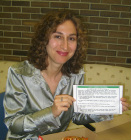
Students made their way to the steps of London City Hall where they found their next clue box. They were to meet on the 2nd floor and Mayor Anne Marie DeCicco was going to treat them to lunch. Mayor DeCicco escorted the students on a personal tour of the chambers then had a pizza lunch them. Students asked questions about her role as a mayor and personal life during and she graciously responded to every one of them. We all gathered on the 12th floor where we had a beautiful view of downtown London and had a group photo taken. The mayor handed out the clue envelopes and they were on their way. Outside city hall, a CBC journalist was waiting for an interview.
Authentic Task #3 - Karate Instruction - Family Karate
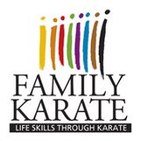
The final authentic learning task was to complete a three part mini course at Family Karate on Wharncliffe Road. Presented by John Marshall's great karate team at Family Karate the students had to learn a kata (series of movements), complete a street proofing test and then break a board. The instructors were excellent and the students were keen. Students knew they had to perform these tasks if they were going to receive their final destination clue, but there wasn't one. Only an acetate clue, the final one. They looked bewildered but slowly started to put it together as they needed to solve the acetate message to be able to know their final, mystery destination.
The Acetate Code: Susan Florian (Madam DeCodeur)
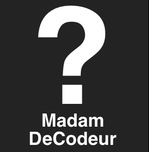
After completing each authentic task, the students were awarded a small piece of acetate. Each piece looked as if it had a smudge mark on it within a rectangle. As they aligned all the rectangles of all the acetates, a number and name appeared. It was a local phone number and the name Madam DeCodeur. A good friend of mine, and retired teacher Susan Florian was ready to take the calls. She disguised her voice as a mysterious agent and told them "Listen carefully, I'm only going to say this once! The coordinates you require are .....". Then she abruptly hung up. The students checked their city map and there at the exact coordinates she had given was the TD Waterhouse Stadium at the University of Western Ontario.
The Final Destination - TD Waterhouse Stadium, University of Western Ontario
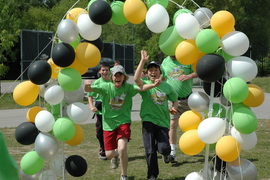
As the students pulled up to the stadium entrance, mostly in limousines, they raced for the balloon entrance of their final destination. Awaiting, were their parents, a London Transit Bus, a celebration tent with refreshments, a theme cake and a disc jockey from BX93 radio station to welcome them all. It was a great way to end two full days of hard work and learning. As soon as they entered the stadium their teams were introduced over the loud speakers and instructed to complete one lap of the track. It was their victory lap! It was a time for thanking parents and the multitude of event supporters for their time and efforts. The list was long. It was truly a sharing, caring community in action.
Parents: An excellent example of a strong parent, school partnership
We had a parent meeting before The Great London Challenge got under way. At that time the premise, the challenge, expectations and event requirements were discussed. If it wasn't for the parents, this event would not have taken place. The amount of commitment, skills, creativity, supplies and dedication this group demonstrated was exceptional. Parents became team supervisors, built challenge letter boxes, created flags and pennants, organized T-shirts to be made, decorated stations, built wooden mystery boxes, became media representatives, couriered items, became safety rovers, videographers and provided food and snacks. This event was an ideal example of the "three-legged stool" as parents, teacher and students all contributed to the success of this event.
CITY RACE GOOD WAY TO LEARN
By Ian Gillespie, London Free Press
By Ian Gillespie, London Free Press
Ancient Roman Living Museum: Londinium
One of my favourite Social Studies anchored authentic learning events is the ancient living museum. Whether it be an Ancient Roman, Medieval Times, Pioneer Days or Ancient Egyptian themes the educational rewards are significant. To celebrate the hard work that goes into the planning and creating of one of these events I find a Smilebox presentation goes a long way in developing individual and team pride when watched a few days after the event. It's also a fantastic way of sharing with loved ones who couldn't attend the open house. Click here to watch an Ancient Roman Living Museum presentation.
Students do not just research history, they become part of history. Over a four week period students learn the aspects of living in a specific era. They learn about society, the geography, history, leisure, food, the arts, architecture and a whole gamut of life in ancient times. When learning about ancient Rome, my students will also learn some Latin phrases, Roman law, taste Roman food samples, learn about the trades and most importantly - become ancient Roman citizens.
Everything they learn provides them with the foundations of becoming an ancient Roman trades person who will create a tangible product or tool of their trade. They will seek expert consultation in the trade of their choice, dress in an authentic costume, create a Roman family lineage and create a market stall for our Ancient Roman Living Market Museum.
Everything the students learn during class instruction has a meaningful application. They are not just learning to achieve a good result on the unit tests, they become citizens of the Roman Empire in the province of Brittania, in the city of Londinium. I chose Londinium as our city here in Canada is London which makes for more learning connections. In learning about life in that era they start to build their own experiences and as it is more meaningful - it "sticks". I have past students that return year after year that share their memories of the living museums and they recall skills and knowledge in remarkable detail.
Our class works together towards a common goal - to present our market to the school and community. We will collectively create murals, make mosaics and advertise our open house yet independently the students choose their own trade. This is their unique journey that fits their interests best. They will research and seek professional consultation and instruction to create a useful, authentic product to share at the living museum.
If you've ever been to a pioneer village or a working castle or fort you'll be immersed in the sights, sounds and atmosphere of the era they are depicting. That's our class goal. If you ever get a chance to see our market you would see students working on authentic period styled products, with authentic tools, in costume at a market stall speaking and acting as if they were ancient Roman people. All senses are engaged and all neurological pathways are lit up. And what nine and ten year olds come up with still amazes me.
Students shared their working experiences in a Roman themed photo album that was displayed at their market stall. In the past, people found it hard to believe that students could actually complete the products they displayed. This little booklet let them go about their business while astounding the visitors of what they could do. A picture means a thousand words!
Everything they learn provides them with the foundations of becoming an ancient Roman trades person who will create a tangible product or tool of their trade. They will seek expert consultation in the trade of their choice, dress in an authentic costume, create a Roman family lineage and create a market stall for our Ancient Roman Living Market Museum.
Everything the students learn during class instruction has a meaningful application. They are not just learning to achieve a good result on the unit tests, they become citizens of the Roman Empire in the province of Brittania, in the city of Londinium. I chose Londinium as our city here in Canada is London which makes for more learning connections. In learning about life in that era they start to build their own experiences and as it is more meaningful - it "sticks". I have past students that return year after year that share their memories of the living museums and they recall skills and knowledge in remarkable detail.
Our class works together towards a common goal - to present our market to the school and community. We will collectively create murals, make mosaics and advertise our open house yet independently the students choose their own trade. This is their unique journey that fits their interests best. They will research and seek professional consultation and instruction to create a useful, authentic product to share at the living museum.
If you've ever been to a pioneer village or a working castle or fort you'll be immersed in the sights, sounds and atmosphere of the era they are depicting. That's our class goal. If you ever get a chance to see our market you would see students working on authentic period styled products, with authentic tools, in costume at a market stall speaking and acting as if they were ancient Roman people. All senses are engaged and all neurological pathways are lit up. And what nine and ten year olds come up with still amazes me.
Students shared their working experiences in a Roman themed photo album that was displayed at their market stall. In the past, people found it hard to believe that students could actually complete the products they displayed. This little booklet let them go about their business while astounding the visitors of what they could do. A picture means a thousand words!
The Good Earth: Persuasive Writings
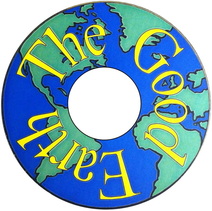 Recordings about "The Good Earth"
Recordings about "The Good Earth"
The Ontario curriculum includes Conservation of Energy as one of its' Science topics. It's a terrific collection of expectations to educate students on the importance of energy and respecting our environment. Unfortunately it's not the most kid friendly of titles, so I re-marketed this unit with a new title, The Good Earth (Conservation of Energy).
As well, an important concept to teach in creative writing is persuasive writing. What better way to consolidate a student's understanding of saving energy, fighting pollution and respecting our Earth, than by writing to promote these concepts. Our class wrote a collection of persuasive writings and then made a CD consisting of these persuasive messages.
Once the students had learned about the types of energy, the issues concerning energy and the issues that pollutions are causing, the students had some background knowledge required to carry our the plan. Students were simultaneously taught the elements needed to write an effective persuasive message. They were divided into groups of four and provided with additional world pollution concerns that we hadn't discussed yet in class. The mission was revealed, the student's interest was peaked and the criteria was laid out.
A brain storm place mat to provide guidelines were handed out and the project ensued. Students selected and wrote a draft of the topic they wanted to write about. There were topics that included light pollution, car pooling, smoking, urbanization, recycling, reducing waste to water use The typical writing process unfolded with brainstorming, first drafts, edits, second drafts and then spoken rehearsals. Students identified the mood of their message, timed their messages, selected accompanying music, selected the gender of reader they wanted, then chose two to three sound effects they would like to include. Their roles were writers and producers of their own audio recordings.
Due to time constraints, we couldn't pursue having the students do their own recordings and provide them the opportunity of learning the basics of how to engineer and record audio. That would have been the ideal situation though and partnering with a local recording studio would be a win-win situation.
There's something very exciting however about passing your work onto another for their expertise in the creative process. It happens all the time in the "real world". It's much like the anticipation a writer feels when their work has been finally completed and it's passed onto the publisher. The anticipation to view their finished product for the first time with brand new graphics, the smell of the new print and the feel of the fresh binding has to be tremendously exciting. With the recording timeline set my students were given a release date of when their audio recordings would be ready and their anticipation began.
In the meantime, they had graphics of their own to complete. Their art classes over the next couple of weeks included learning about CD packaging, designing and creating their own artwork for their own personalized CD copy. Students were given CD templates providing them with measurements, logo placement, bar codes, and open spaces to allow for the insertion of track listings, titles and blurbs to be added by computer later.
Over the next few weeks the recordings were made in a private studio. Guest speakers/characters were invited in and recorded. The creations were completed as to the mood, music and sound effects outlined by the young writers and within the time restraints allotted. During this time, the students created artwork for their CD covers. Titles, credits and track listings were aligned properly and printed onto the coloured CD cover and inserts. With the help of several parent volunteers, we packaged each CD and readied them for for the reveal.
The day arrived and the CDs were handed out to a very excited class. We organized our own release party, snacking on baked goods. drinking juice and sharing each others artwork. We took time to have a "Would Have, Could Have" discussion to share ideas on what we could have done to make them better and more "real world". The final stage in this endeavor was to share The Good Earth CD with our community. I purchased several 12 panel snap-in CD picture frame that would display each students' creation and hung them on our classroom wall for a few weeks. Lastly, we made arrangements with the office to play a track each morning on the school announcements leading up to Earth Day on April 22. The icing on the cake was when a local radio station played a selected track off The Good Earth CD" on that special earth day as well.
As well, an important concept to teach in creative writing is persuasive writing. What better way to consolidate a student's understanding of saving energy, fighting pollution and respecting our Earth, than by writing to promote these concepts. Our class wrote a collection of persuasive writings and then made a CD consisting of these persuasive messages.
Once the students had learned about the types of energy, the issues concerning energy and the issues that pollutions are causing, the students had some background knowledge required to carry our the plan. Students were simultaneously taught the elements needed to write an effective persuasive message. They were divided into groups of four and provided with additional world pollution concerns that we hadn't discussed yet in class. The mission was revealed, the student's interest was peaked and the criteria was laid out.
A brain storm place mat to provide guidelines were handed out and the project ensued. Students selected and wrote a draft of the topic they wanted to write about. There were topics that included light pollution, car pooling, smoking, urbanization, recycling, reducing waste to water use The typical writing process unfolded with brainstorming, first drafts, edits, second drafts and then spoken rehearsals. Students identified the mood of their message, timed their messages, selected accompanying music, selected the gender of reader they wanted, then chose two to three sound effects they would like to include. Their roles were writers and producers of their own audio recordings.
Due to time constraints, we couldn't pursue having the students do their own recordings and provide them the opportunity of learning the basics of how to engineer and record audio. That would have been the ideal situation though and partnering with a local recording studio would be a win-win situation.
There's something very exciting however about passing your work onto another for their expertise in the creative process. It happens all the time in the "real world". It's much like the anticipation a writer feels when their work has been finally completed and it's passed onto the publisher. The anticipation to view their finished product for the first time with brand new graphics, the smell of the new print and the feel of the fresh binding has to be tremendously exciting. With the recording timeline set my students were given a release date of when their audio recordings would be ready and their anticipation began.
In the meantime, they had graphics of their own to complete. Their art classes over the next couple of weeks included learning about CD packaging, designing and creating their own artwork for their own personalized CD copy. Students were given CD templates providing them with measurements, logo placement, bar codes, and open spaces to allow for the insertion of track listings, titles and blurbs to be added by computer later.
Over the next few weeks the recordings were made in a private studio. Guest speakers/characters were invited in and recorded. The creations were completed as to the mood, music and sound effects outlined by the young writers and within the time restraints allotted. During this time, the students created artwork for their CD covers. Titles, credits and track listings were aligned properly and printed onto the coloured CD cover and inserts. With the help of several parent volunteers, we packaged each CD and readied them for for the reveal.
The day arrived and the CDs were handed out to a very excited class. We organized our own release party, snacking on baked goods. drinking juice and sharing each others artwork. We took time to have a "Would Have, Could Have" discussion to share ideas on what we could have done to make them better and more "real world". The final stage in this endeavor was to share The Good Earth CD with our community. I purchased several 12 panel snap-in CD picture frame that would display each students' creation and hung them on our classroom wall for a few weeks. Lastly, we made arrangements with the office to play a track each morning on the school announcements leading up to Earth Day on April 22. The icing on the cake was when a local radio station played a selected track off The Good Earth CD" on that special earth day as well.

